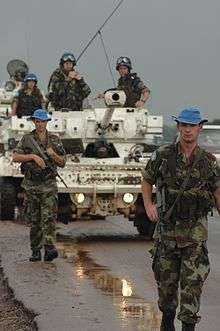Panhard AML
The Panhard AML (Auto Mitrailleuse Légère, or "Light Gun Car") is a fast, long-ranged, and relatively cheap first-generation armoured car with excellent reconnaissance capability.[7] Designed on a small, lightly armoured 4X4 chassis, it weighs an estimated 5.5 tonnes - much lighter than a tank - and is therefore more rapidly deployable. Since 1959 AMLs have been marketed on up to five continents; several variants remained in continuous production for half a century.[8] These have been operated by fifty-four national governments and other entities worldwide, seeing regular combat.[9]
The AML-245 was once regarded as one of the most heavily armed scout vehicles in service, fitted with a low velocity DEFA D921 90mm (3.54 in) rifled cannon firing conventional high explosive and high explosive anti-tank shells, or a 60mm (2.36 in) breech loading mortar with 53 rounds and dual 7.5mm MAS AA-52 NF-1 machine guns with 3,800 rounds, all mounted coaxially in the turret.[10] An AML is capable of destroying targets at 1,500 meters with its D921 main gun. In this configuration it is considered a match for second-line and older main battle tanks.[11][12]
AMLs have appeared most prominently in Angola, Iraq, and the Falkland Islands, where they were pitted against British FV101 Scorpions by Argentine forces, as well as in the Lebanese Civil War between 1975 and 1990.
History
During World War II, the French Army and their Free French successors used a wide variety of vehicles for reconnaissance duties, ranging from the compact Laffly S15 to the Panhard 178, which could mount the same 75mm armament as contemporary heavy tanks, and multi-wheeled designs such as the Type 201.[6] After the war it became less desirable to maintain this plethora of armoured cars. In July 1945 Paris issued a requirement for a postwar design combining those features of previous assets - especially the Type 201 - that had shown potential both during and prior to the Battle of France. This led to the 8x8 Panhard EBR (Type 212) which entered service in 1950.[13] Similarly, in 1956 the French Ministry of Defense was persuaded to commission a replacement for the Daimler Ferret scout car. Also manufactured by Panhard, the successor was the AML (Type 245) which entered service in 1961.[14]
As with much postwar hardware based on the experience of subsequent colonial theatres, the AML was recognized for its outstanding ruggedness, dependability, firepower-to-weight ratio, and adaptability to the numerous minor conflicts waged since 1945.[6] This reputation has led to export success in over forty countries, Africa being one of its biggest markets.[13]
Development

The Panhard AML was birthed as a private venture by the Société de Constructions Panhard et Levassor, a military subsidiary of PSA Peugeot Citroën. It was derived in part from the Daimler Ferret, offering important similarities in external design. The first prototype appeared in 1959 and the vehicle was put into production in 1960, with more than 4,000 examples constructed by the time production ended.
In the late 1950s, the French Army successfully operated a number of Ferret scout cars in Algeria. Impressive as they were from a conventional standpoint, the rest of France's existing light armour—such as the Panhard EBR and M8 Greyhound—were not suitably equipped for counter-insurgency; battles of the Algerian War often involved short, sharp, skirmishes which required indirect fire support such as mortars rather than solid shot and shell.[15] In addition, the North African conditions demanded a lighter, less sophisticated, vehicle which would be simpler to maintain and operate. As an interim measure France had purchased two hundred Ferrets from the United Kingdom.[16] These were light enough but carried only a single general-purpose machine gun, which was inadequate for offensive purposes. Nevertheless, they were sufficiently successful that there was a possibility of producing the Ferret under licence in France. However, Saviem, Berliet, and Panhard petitioned for bidding on a home-grown vehicle, and in 1956 the Ministère de la Défense issued specifications for an indigenous wheeled armoured car of similar dimensions and layout to the Ferret but mounting a breech-loading mortar. By 1959, this had emerged as the Auto Mitrailleuse Légère, designated Model 245 "B" by Panhard.[17] Early prototypes were completed in mid-1959 and by the end of 1961 at least one regiment in Algeria was receiving them.[16] The AML was equipped with a 60mm Brandt gun-mortar and two medium MAS AA-52 NF-1 machine guns.[6] Until Panhard's acquisition by Citroën later in the 1960s, it was manufactured at a single plant near the Porte de Choisy in the 13th arrondissement of Paris.[18]
The AML was immediately successful, but as the Algerian conflict diminished so did the need for a light mortar carrier deployed in anti-guerrilla operations. A more primary concern was the conventional threat posed by Soviet airborne fighting vehicles in the event of a Warsaw Pact invasion. Meanwhile, South Africa, an AML customer which had considered adopting the British Alvis Saladin, also charged Panhard technicians to look into the development of an AML variant with equal or superior fire support capability.[15] This and the adoption of a highly effective 90mm rifled cannon led to all new AML-245 "C"s being refitted with the H-90 turret sporting the new gun.[17] It fired fin-stabilised, shaped charge, projectiles boasting a muzzle velocity of 760 m/s and more than capable of penetrating 320mm of rolled homogeneous armour. In consequence, the later AMLs could even engage main battle tanks.[19][20] In addition to its high explosive anti-tank (HEAT) shells the H-90 also carries fin-stabilised high-explosive (HE) projectiles, the total number of rounds stored being 20, compared with the 53 of the original 60mm mortar version.[4]
To provide a complete family of wheeled armoured cars, Panhard used AML components to engineer a small personnel carrier, the Véhicule Transport de Troupes, better known as the Panhard M3. The M3 consisted of a boxy, all-welded, hull with an engine relocated behind the driver in order to provide a large troop compartment at its rear. Its wheelbase was also increased from the AML's 2.5m to a higher 2.7m. and the track from 1.62 to 2.5m. In spite of this, maintenance alongside the AML fleet is rather simplified, given that both vehicles share a 95% interchangeability in automotive parts.[6]
Mass production of the AML likely ceased at some point prior to the early 1980s.[20] However, AMLs continued to be sold from French Army surplus stocks as late as 1999, when the final export orders were placed by Yemen and Tunisia.[21] They were also marketed by a number of other second-hand suppliers, including South Africa, Israel, and Saudi Arabia.[21]
Specifications
Fitted with coil spring suspension and drum brakes, the AML lacks hydraulic assist on either brakes or steering; only front wheels steer.[6] Consequently, the steering wheel requires considerable strength to turn while the vehicle is in motion—while stationary it remains effectively locked.[22] Much like the Ferret, rear wheel drive is transmitted directly to epicyclic hub reduction gears, also known as bevel boxes.[23] The motor and gearbox have been harnessed via a centrifugal clutch with electromagnetic control, eliminating the need for a clutch pedal.[24] This type of clutch is automatically engaged by gripping the knob of the gearshift lever, which is located behind the driver's seat in the hull floor.[23] The gearbox assembly consists of two separate gearboxes, one for high and the other for low gear. The low-range gearbox is designed for off-road use and has a reverse gear and a top gear, while the high-range box is for operation on roads and has three low gears and one overdrive.[25]
An AML's crankshaft is carried in three ball bearings to reduce motor friction.[23] Powerplant design was inspired by the Panhard EBR and incorporates an air-cooled, 156 litre, four cylinder engine developing 67 kW (90 hp).[26] AMLs may also be fitted with a variety of liquid-cooled engines, although as demonstrated by its Eland Mk7 counterpart this requires a costly reconstruction of the rear hull to accommodate the new cooling apparatus.[24]
AML hulls are assembled from only 13 welded pieces, with a driver seated at the front of the hull and the turret to his immediate rear.[23] Above both doors the hull widens into a circular flange onto which the turret is bolted.[27] This makes the turret basket extremely cramped, and little space is available above an AML-90's turret ring due to the massive gun breech and somewhat haphazard ammunition stowage. There are optical ring sights in front of both turret seats for quick laying of the main armament.[27] AML turrets have a two-man crew, with the commander seated on the left and the gunner on the right.[25] Depending on the variant, either may operate the roof-mounted searchlight. Seven periscopes are provided for the turret crew and three for the AML's driver.[28] One of the three driving periscopes may be substituted with an infrared or image intensification periscope for night operations.[25]
On either side of the hull below the turret ring is an access door, one for the driver on the right and one intended for emergency purposes on the left.[25] The left hull door, on which a spare wheel and tyre or fuel cans may be mounted, opens to the rear while the right hull door opens to the front. The engine housing at the rear of the hull is accessed through two access panels,[25] and is insulated from the crew compartment by a removable bulkhead.[29] Two sand channels resembling those on the Ferret are bolted to the hull front for crossing ditches and other obstacles.[25]
The AML uses nitrogen inner tubes (in this case Hutchinson V.P.-P.V.s) adopted from the EBR, providing run flat capability on 41 cm (16 in.)-diameter wheels; its 280mm (11 in.) wide Michelin tyres can be deflated to reduce ground pressure to as low as 70 to 110 kPa (10 to 16 psi).[6] These have been replaced in some Anglophone armies by the Dunlop Trak Grips also favoured in Bedford and Alvis military vehicles.[23]
Service history
France

French military doctrine recognised two separate fields of armoured vehicle deployment, the first consisting of primary tasks such as manoeuvre and combat, while the second included other tasks such as rearguard defence, liaison, and deception. The latter was to be the responsibility of a mobile reserve which provided interior security during wartime - designated Défense Opérationnelle du Territoire (DOT) armoured cavalry regiments.[30] Initially equipped with AMLs and jeeps modified for scouting purposes, these units worked closely with the French police and National Gendarmerie. Their goal was to intercept hostile special forces or airborne units which specialised in deep penetration behind the front line. Secondary tasks included counter-insurgency, passive observation, and guarding static installations.[30]
Each DOT troop came to include three AML platoons.[30] As they were expected to remain faithful to the traditional mission of reconnaissance where observation had priority over combat, a number of the Panhards seem to have been stripped of their main armament, necessitating crew dependence on the vehicle's secondary automatic weapons. Nevertheless, as French reconnaissance theory also suggested the occasional need to engage hostile armour and force it to deploy, AML-90s were favoured as well. DOT regiments came to hold a generic pool of sixteen AML-90s and thirty-four other AMLs of varying configuration.[30]
As the AML was readily air transportable, it came to form the materiel strongpoint of the French Foreign Legion's rapid deployment force.[10] The Legion AMLs saw combat overseas, either as part of single deployments by the 1st Foreign Cavalry Regiment or to provide fire support for other Legion regiments. Crews perfected unique airfield assaults in which AML-90s were unloaded directly from Transall C-160s onto the objective, with infantry joining them by parachute.[10] They could also deploy from Breguet 941 and Nord Noratlas aircraft.[28] These vehicles first saw combat against BTR-152s manned by FROLINAT rebels in Chad during Opération Tacaud, successfully engaging an insurgent mechanised column approaching Salal around April 1978.[31] On 18 May another sixteen AMLs, supported by a company of French infantry, routed FROLINAT elements advancing on Ati.[31] In the subsequent months, additional AML-90s rushed in by the Régiment d'infanterie-chars de marine (RICM) repelled a major offensive near Abéché by the Chadian Democratic Revolutionary Council, which was backed by fifty Libyan T-55 tanks and EE-9 Cascavel armoured cars.[31]
Despite the intensity of these clashes, only three[32] French AMLs were lost in Chad between 1978 and 1979, most likely to RPG-7s.[31] The Foreign Legion's AML squadrons continued to see action during Operation Manta and the extended Opération Épervier, being organised into anti-tank support groups for three battalion-sized task forces.[33] Their speed and mobility proved instrumental in destroying much heavier Libyan main battle tanks.[33] However, the French crews could only make up for their inferiority in firepower by outflanking the tanks first or attacking from the rear, and by the mid 1980s the threat posed by large Libyan armoured formations was considered so severe a squadron of AMX-10RCs had to be deployed as well.[33]
A single RICM AML platoon was deployed to assist in the 1979 overthrow of the Central African Empire during Operation Caban, likely shifted from Marine contingents stationed in Chad or Gabon.[32] The armoured cars were landed at the airport in concert with French paratroopers during a textbook airborne assault; however, the defending Central African troops surrendered without offering resistance.[32] AMLs did not see action again until Operation Épaulard I, when twenty AML-60s and AML-90s were deployed for infantry support purposes. As the French infantrymen lacked heavy weapons of their own, they remained dependent on the AMLs for suppressing hard targets; this persuaded the French Army of the need for infantry fighting vehicles in overseas operations.[34]
The Mobile Gendarmerie operated over a hundred AML-60s and AML-90s, which were allocated to nineteen separate squadrons. In subsequent decades, a number may have been replaced by the much heavier Renault VBC-90.[35] France is still believed to possess three hundred AMLs in storage.[36]
Middle East
Israel
An order of 29 AML-90s placed by the Israel Defense Forces (IDF) in 1960 marked the first sale of AMLs to a foreign power, ushered in a new era of French arms sales to Tel-Aviv, and helped cement Panhard's success on the export market.[21] The IDF armoured cars had been received by the end of 1963 and were first displayed publicly on the eve of Yom Ha'atzmaut, 1966.[38] Israeli units were primarily impressed by their high mobility and ergonomic nature, which was deemed ideal for airborne operations.[39] Nevertheless, the AML-90's envisaged deployment by new Aérospatiale SA 321 Super Frelons also purchased from France did not materialise, as the helicopters could not handle its 5,500 kg combat weight.[17]
At least 9 AML-90s were in service with the 41st Reconnaissance Company of the Harel Brigade during the Six Day War under a Major Amnon Eshkol, participating in the capture of Ramallah in June 1967.[40][41] The AMLs were initially posted at Mevaseret Zion following the fall of East Jerusalem. They were among the first IDF armor to cross into the West Bank during the conflict, probing for Jordanian resistance. Major roads had been blocked by tank barriers although these could be easily bypassed in nimbler armoured cars.[42] The much more cumbersome Super Sherman and Centurion tanks tasked with leading the IDF's spearhead towards Tell el-Ful failed to reach their objective; most were forced to turn back in the face of difficult terrain. Joined by the surviving seven Shermans and eight M3 half-tracks, Major Eshkol's AML-90s later helped defeat a Jordanian counterattack with M48 Pattons.[42]
In the War of Attrition, Israeli AMLs faced Jordanian M48s again on the Damia Bridge during the Battle of Karameh.[17] Originally tasked with screening the IDF Shermans as they crossed the bridge, the lightly armoured AML-90 was at a unique disadvantage when confronted by entrenched Pattons. Moreover, the Jordan River was in flood and vehicle crews were unable to exploit their manoeuvrability in the muddy farmland. Several AMLs were knocked out by tank fire or towed anti-tank guns. They were withdrawn from service not long afterwards.[17]
The Arab–Israeli conflict marked some of the highest armour-to-armour kill ratios achieved with the AML platform to date, including the destruction of at least 13 Egyptian and Jordanian tanks.[43] Especially notable were several T-54 kills credited to an AML-90 platoon in the Sinai Peninsula: as late as the 1980s, military scholars continued to maintain that the 90mm DEFA cannon lacked the muzzle velocity to penetrate the thick steel hull of a T-54/55.[22] More well-documented cases have since verified this was possible, though only with multiple shots or a direct hit on the turret rim near the driver's hatch.[22][44] Israeli AML crews also sustained losses of their own during this engagement,[43] and some AML-90s may have been captured intact by the Egyptian defenders.[45]
Saudi Arabia
In 1964, the Royal Saudi Army issued a requirement for an armoured car proven in desert warfare and equipped with a large semiautomatic cannon.[46] Bids were accepted from three companies—Alvis, Cadillac Gage, and Panhard—which offered the Saladin, V-100 Commando, and AML, respectively, but the debate over which of the three to adopt was hamstrung by political considerations early on.[46] Saudi Arabia remained inhibited from seeking American assistance in devising suitable defence programmes by the criticism and hostility of other Arab states. Under these circumstances, only arms transactions with French or British firms could be entertained.[47] Despite longstanding diplomatic contacts, the French presence in Riyadh was rather limited compared to that of the United Kingdom, and the latter was in a better position to provide long-term logistical support for armoured cars to the Saudi military.[46] Alvis was initially awarded a contract for 83 Saladins with a ten-year option on spare parts.[46] Final negotiations for the delivery of the Saladins were underway[46] when Sultan bin Abdulaziz abruptly cancelled the purchase in favour of Panhard.[48]
The $95 million Panhard deal proved instrumental in breaking existing preconceptions that the Arabian arms market was well protected by the UK. Gaullist circles heralded it as a major business and political success.[49] In an interview in Beirut, Sultan bin Abdulaziz merely asserted that AMLs were selected as part of King Faisal's policy to strengthen the army with a greater infusion of modern arms.[50] Saudi Army officials had preferred the heavier Saladin and appreciated its worthiness in desert conditions, but conceded the AML-90 was much cheaper.[48] Panhard undertook the order amid much protest by pro-Israel lobbyists in France, who urged restraint in shipping arms to Arab bloc states likely to use them against Tel-Aviv. The sale was also challenged as a violation of Charles de Gaulle's Middle Eastern embargo, although the French government insisted it did not classify armoured scout cars as the same "heavy war materiel" covered by sanctions.[49]
Saudi AML-90s of the 20th Armoured Brigade were blooded near Daraa during the Yom Kippur War, having been airlifted to assist its Syrian defenders in Lockheed C-130 Hercules aircraft loaned from Iran.[51] The airlift was carried out on October 14, 1973; six Iranian C-130s were needed to convey the vehicles and about 2,000 motorised infantrymen from Saudi Arabia to Syria. AML crews were generally assigned to static guard duty, patrolling the Damascus-Daraa road and keeping lines of communications clear between the multinational Arab forces.[51] At least one AML-90 was captured by the Golani Brigade, likely while attempting to reconnoiter an IDF position after dark.[52] The Saudi contingent later participated in the fighting at Tel Maschara alongside the Jordanian 40th Armoured Brigade. They were halted by accurate tank fire from the IDF's 17th Reserve Armour Brigade and later forced to retreat.[52] Four AML-90s were destroyed, presumably during this action, although the Saudis claimed to have also knocked out 5 Israeli tanks and damaged 5 more.[51]
Saudi Arabia ordered between 200 and 220[49] AMLs from France in 1968, with deliveries completed by 1970.[21] Some sources have claimed a second order was placed in 1978 for another 250.[53] The Saudi Army has since retired much of its Panhard fleet and exported surplus stocks to various nations.[54] During the Gulf War, an estimated 200 AML-90s were phased from service.[55] Upon learning that the Senegalese units participating in Operation Desert Shield were also familiar with the Panhard type, General Khalid bin Sultan ordered a number retained for their use. The armoured cars were hurriedly serviced, then donated to Senegal.[note 1] Large quantities were also accepted by Morocco and Niger.[54]
Lebanon
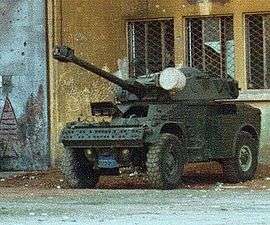
At least 74 AML-90s were delivered to the Lebanese Armed Forces (LAF) between 1970 and 1975, and saw considerable action in the Lebanese Civil War.[21] As their crews often left them unguarded outside army compounds, several may have been stolen by LAF deserters on their way to join regional militias.[56] Others vanished during the disintegration of individual battalions, and by 1981 Lebanon's fleet had dwindled to 52.[57] The surviving AML squadrons remained plagued by chronic shortages of personnel; some crews even fought in their turrets without a trained commander and depended on inexperienced spotters outside the vehicles to guide their fire. This resulted in phenomenal inaccuracy.[58]
Following the Battle of the Hotels, Lebanese Front troops in the Port District of Beirut brought their Panhards into action for the first time in the civil war, engaging Charioteer tanks crewed by Amal and Lebanese Arab Army (LAA) militants. Having lost nearly all their heavy armour and tanks to the militias, the predominantly Christian remnants of the Lebanese Army appropriated three AML-90s and nine obsolete T17 Staghounds to stave off repeated assaults by LAA forces from the hotel district.[59] Due to the armoured cars' heightened vulnerability to RPG-7s, their crews began using debris as makeshift barricades. Muslim fighters failed in attempting to destroy the AMLs with RPGs, as well as B-10 and M40 recoilless rifles, since the projectiles lacked a clear trajectory in the rubble.[59] The AML-90s' immense firepower at close quarters soon resulted in great structural damage to portside Beirut; a number of fortified buildings were wrecked by 90mm HE shells, and those struck by multiple HEAT volleys demolished on their foundations. With truck-mounted ZU-23-2s covering their advance, the AMLs advanced on Allenby Street, flattening all resistance, and took the waterfront.[59] Although both the LAA and the leftist Lebanese National Movement hastily brought up Charioteers and M41 Walker Bulldog tanks, so much wreckage was blocking the streets they could not manoeuvre. It was impossible to shoot accurately through the debris, and tanks could only manage speculative fire to discourage the AMLs.[59]
In 1983, LAF tanks with AML-90s in support were sent to eliminate Amal militants then threatening elements of Multinational Force in Lebanon (MNF) at the Lebanese University. Following the Siege of Beirut, the LAF again mobilised its AMLs to occupy positions vacated by withdrawing Israeli troops.[58] An undisclosed number were upgraded to AML-90 Lynx standard, including laser rangefinders, and continued to see service as late as 2014 against Syrian militants.[60][61]
Militia use
Panhard AMLs were favoured by the Lebanese militias due to their flexibility, especially in urban combat situations which saw them deployed against heavier Syrian armour.[62] A detailed analysis undertaken by the United States Army Research Laboratory in 1979 found the AML "operated effectively in Beirut" and noted that "the ease with which the Panhard is driven and repaired, and the absence of tracks, provide the mobility desirable in an urban environment."[59] Modifications to militia AMLs included replacement of the original Michelin tyres with an air-pocketed type more resistant to mortar shrapnel, as well as increased armour plate—fabricated after the appearance of Syrian tanks made it difficult ordering volunteers to man the lightly protected vehicles.[59]
Christian Phalangist militiamen deployed twelve AML-90s as assault guns during the Siege of Tel al-Zaatar, using their elevated 90mm cannon to knock out second or third storey fortifications shielding Palestinian guerrillas.[59] AML-90s of the Progressive Socialist Party (PSP) also swung into action against five Staghounds of the Lebanese Internal Security Forces during a raid on Fayadiyeh barracks in mid 1976. The armoured cars were incompetently handled by the leftist forces, and later abandoned near Kahale with an AMX-13 due to mechanical problems.[59]
UNIFIL
In April 1978, AMLs of the Irish Army were deployed with the United Nations Interim Force in Lebanon (UNIFIL), where they saw considerable action against the South Lebanon Army (SLA) militia.[64] Ireland had originally purchased 16 AML-60s in 1964 for its large United Nations Peacekeeping Force in Cyprus (UNFICYP) contingent.[65] The deterioration of the security situation led to its purchase of another 16 AML-60s and 20 AML-90s, which had been initially rejected due to their expense but were now deemed necessary for their significant offensive capabilities.[66] A reconnaissance company consisting of at least 4 UNFICYP AML-90s and 14 Panhard M3s were subsequently shipped from Cyprus to Lebanon alongside the 43rd Irish Battalion, which joined the newly formed UNIFIL.[66] As the most heavily armed of the national UNIFIL contingents, the Irish AMLs frequently functioned as a mobile force reserve.[66] They were also used for manning checkpoints between the belligerent SLA and Palestine Liberation Organization (PLO) positions.[67] By 1980 at least one AML had been damaged by a PLO RPG-7 aimed at the SLA lines. The armoured car caught fire, though all three crew members survived.[67]
On August 12, 1980 SLA militiamen attacked an Irish UNIFIL checkpoint at the village of At Tiri in southern Lebanon,[67] having been antagonised by a statement made by Brian Lenihan Snr, Ireland's minister for foreign affairs, which they perceived as supportive of the PLO.[68] One peacekeeper was mortally wounded, nine others taken prisoner, and the checkpoint overrun.[68] The SLA then deployed four M9 Half-tracks equipped with Browning HB heavy machine guns, which they used to harass UNIFIL convoys. Two days later, Irish AML-90s counterattacked and retook the village. One half-track was immobilised, and a second destroyed after receiving a direct hit from a 90mm shell.[67] A third was abandoned when its Browning was disabled by warning fire from an AML's coaxial machine gun.[68] The armoured cars also held a tense standoff with SLA M50 "Super" Sherman tanks on the outskirts of At Tiri, although the latter ultimately declined to intervene in the fighting and were not engaged by Irish forces.[62] They withdrew upon the arrival of Dutch UNIFIL reinforcements armed with BGM-71 TOW missiles.[68]
At least one AML-90 crew commander was awarded Ireland's highest military honour, the Military Medal for Gallantry, for actions during the At Tiri engagement.[68] Irish AMLs may have seen action again in 1996 during Operation Grapes of Wrath.[69]
Iraq
In 1991, AML-90s were deployed, somewhat ineffectually, by Iraqi reconnaissance units against USMC and Saudi National Guard forces during the Battle of Khafji.[70]
South America
In the Falklands War, the Argentines deployed 12 AML-90s from Escuadron de Exploracion Caballeria Blindada 181 (181st Armoured Cavalry Reconnaissance Squadron) and an unknown additional number from Escuadron de Exploracion Caballeria Blindada 10 near Port Stanley. During the Battle of Wireless Ridge the only armour versus armour engagement of the war was fought when these units encountered FV101 Scorpions and FV107 Scimitars of the Blues and Royals. The armoured cars were abandoned in Stanley after the conflict ended.[71]
At least one AML-90 was destroyed by FMLN insurgents with rifle grenades and an M67 recoilless rifle in the Salvadoran Civil War.[72]
Africa
During the Portuguese Colonial War, the Portuguese Army operated AML-60s in Angola, Mozambique, and Guinea-Bissau. Approximately 50 were ordered in 1965 to replace the heavier Panhard EBR.[21] Severe maintenance problems were encountered in the corrosive African environment, and custom air intakes cannibalised from utility vehicles had to be installed accordingly.[73] Local engineers also copied several modifications applied to the Eland Mk7 for improved performance in this theater.[73] In Portuguese service, the AML-60 equipped reconnaissance platoons, mainly used in convoy escort.[74]
In 1987, during the Toyota War, FANT's use of swift wheeled vehicles, including AML-90s, allowed Chadian forces to break through combined arms formations and cause severe damage before the slower Libyan tanks could track or engage their targets. The Panhards, deployed in concert with MILAN missile teams at strategic hill junctures, frequently ambushed T-55s at a range of under three hundred metres.[75]
Tunisian AML-90s were deployed against militants of the Islamic State of Iraq and the Levant in Libya (ISIL) during the Battle of Ben Guerdane in March 2016.[76]
In mid-December 2010, AMLs manned by Laurent Gbagbo's supporters were used to intimidate Ivorian civilians in Abidjan and the western countryside.[77]
The Ecole de Formation et d'Application des Troupes Blindes, at Mbanza-Ngungu in the Democratic Republic of the Congo, was originally established by French Military Cooperation Mission to instruct African AML crews. Today, the academy can host 70 trainees; ten African armies are currently participating in the program.[78]
Variants
AML-60
Known more formally as the AML HE 60-7, or by its manufacturer's code AML-245B, the AML-60 was Panhard's initial production model and included a rounded turret with twin 7.62mm machine guns on the left and a breech-loaded 60mm (2.36 in.) mortar on the right, with 3,800 stored rounds of 7.62mm ammunition and 43 to 53 mortar projectiles, respectively.[26] The mortar can still be muzzle loaded from outside the vehicle, but is unique in its opening breech locked by a falling block much like direct fire artillery. It has an elevation of +80° and a depression of −15°.[79] Two types of mortars are available: a Hotckiss-Brandt CM60A1 or, in later production models, a Cloche Spéciale (CS) 60 designed by the French government's Direction technique des armements terrestres (DTAT), which was distinguished by its ribbed barrel.[79] The ergonomic dimensions of the CS 60's ammunition allow ten more mortar bombs to carried for a total of 53, as opposed to the CM60A1's 43. Both can be fired on a flat trajectory and are effective at no more than 300 metres in the direct role, or 1,700 metres in the indirect role.[79] Separate combat and command variants of the AML HE 60-7 turrets were manufactured, the latter being fitted with additional radio equipment and therefore possessing comparatively limited stowage.[79] The number of stored ammunition is reduced to 32 mortar bombs and 3,200 7.62mm rounds, respectively.[26]
An AML-60's crew commander acquires targets, directs the gunner, and makes a series of ranging and ordnance calculations to ascertain firing angles.[22] Sighting is optical, and carried out through an M112/3 combined monocular telescope and binocular periscope. Elevation aiming control is linked to the mortar but provision made for manual scanning. In late production models, the micrometre markings on the sights could be illuminated for night firing.[79]

AML 60-20
Known as the AML HE 60-20, the AML 60-20 replaced both co-axial 7.62mm machine guns with an M621 20mm autocannon with 500 stored rounds.[26] The 20mm autocannon was based on the MG 151 and has an elevation of +50° and a depression of −8°, allowing it to engage low-flying aircraft as necessary.[6] It fires both armour-piercing and high-explosive rounds with a muzzle velocity of 1040 m/s.[79] An optional 7.62mm pintle-mounted machine gun can be mounted on the turret roof as necessary, although only 1,000 rounds of ammunition may be stored.[79]
AML 60-20 Serval
The AML-60-20 Serval mated an AML-60 chassis to the much larger and more sophisticated Serval turret designed by Hispanio-Suiza CNMP, with considerable improvements to the firepower, sights, and ammunition stowage of the original AML 60-20 concept.[79] Two types of 20mm autocannon were offered: the M693, or the Oerlikon KAD B-16 (Hispano-Suiza HS.820).[26] The original CS DTAT or CM60A1 mortars were replaced by the long-barelled Brandt 60mm LR gun-mortar, which more than doubled the range of the main armament.[79] The Brandt LR also fired a unique armour-piercing projectile.[80] Due to interior space taken up by the larger mortar, the autocannon and a 7.62mm machine gun were shifted to a new position at the rear of the turret.[79]
AML 60-20 Servals were the first AML-60 variants to be fitted with an electrical fire control system developed specifically for gun-mortars.[81] The apparatus consisted of two separate control units, one for the gunner and commander, and a new rangefinder.[81] It also included an inclinometer and was designed to allow the main armament to be fired while the AML was parked on sloping ground, without compromising accuracy. A gunner could make the appropriate corrections to bearing aim, based on the altitude according to the horizontal.[81]
AML 60-12
Known as the AML HE 60-12, the AML 60-12 was identical in every manner to the AML 60-20 but replaced the 20mm autocannon with a single 12.7mm heavy machine gun. Its turret had an ammunition capacity of 1,300 rounds of 12.7mm and 3,800 rounds of 7.62mm.[79] This variant was only known to have been supplied to Burundi, which purchased six for its armed forces in 1983.[21]
AML-90
Formally known as the AML H-90, or by its manufacturer's code AML-245C, the AML-90 was designed for carrying out rearguard duties and substituting for the heavier tanks and armoured fighting vehicles deployed in a more linear fashion at the front.[30] Its major feature was its DEFA low-pressure 90mm rifled gun, which permitted the anti-tank and reconnaissance elements of French territorial units to be combined into a new component capable of knocking out the heaviest vehicle likely to be ranged against it, the Soviet ASU-57 and ASU-85.[15] This was a direct response to Soviet airborne doctrine—Moscow's tacticians then attached great significance to the deployment of paratroopers, with their own artillery and armour, deep behind enemy lines.[82]
The DEFA D921 was the first 90mm low-pressure gun to be mass-produced in France.[83] It was specifically designed for vehicles weighing under ten tonnes in mind, and the successful mating of such a large calibre weapon on the five tonne AML chassis was then considered a major engineering achievement.[23] This made an AML-90 exceptionally well-armed in proportion to its weight, and offered the advantage of easier recoil loads over conventional tank cannon.[19] The weapon was developed by the Etablissement d'Etudes et de Fabrications d'Armement de Bourges (EFAB) in the 1950s and partly modelled after the Mecar series of lightweight 90mm KEnerga guns from Belgium.[83] Unlike the Belgian guns however, the DEFA D921 lacked a smoothbore barrel, instead utilising shallow rifling with a rather slow twist to impart a low rate of spin to the discharging projectile.[83] Its ammunition was also fin-stabilised, but improved on the Mecar ammunition by incorporating the fins as a direct extension of the individual shell, making it much shorter.[83]
As mounted on the AML-90, the D921 has an elevation of +15° and a depression of −8°.[79] It is provided with a co-axial 7.62mm machine gun to the left of the main armament. The turret is traversed by rotating the gunner's handwheels, which are not power assisted. Cranking the turret through a full 360° takes approximately twenty-five seconds.[79] A total of 20 90mm shells and 2,400 rounds of machine gun ammunition are carried. The 90mm high-explosive anti-tank round possesses a muzzle velocity of 750 m/s and will penetrate 320mm of armour at an incidence of 0°, or 120mm of armour at 60°.[5] The high-explosive round has a muzzle velocity of 650 m/s.[79] These rather low velocity performances, although suitable for close combat, make hit probability poor at extended ranges and proved to be a serious handicap when fighting tanks.[84] Combat experience during the South African Border War and the Six Day War proved that the AML was decisively outranged by both the T-34/85[84] and the M48 Patton, respectively.[85] Its rather austere fire control, with optical ranging based on the crew commander's estimates, was also problematic.[79] The vehicle is unable to fire on the move, since its transmission cannot absorb the recoil of such a large gun while in forward motion and suffers excessive wear as a result.[86] Nevertheless, during at least three conflicts the AML proved capable of knocking out main battle tanks, often by attacking from the flank or rear.[33][43][87] The heaviest armour destroyed by an AML-90 was likely a Libyan T-62 during the Toyota War, in March 1988.[33]
The D921 recoils approximately 58 cm[79] and is then returned to the firing position by a hydropneumatic recuperator.[88] It is fitted with a double-baffle muzzle brake which reduces the magnitude of the firing impulses and consequently, the average recoil forces. However, the deflection of propellant gases rearward and the resulting overpressure may cause whiplash to the crew.[83] During runout the breech is opened and an empty shell casing ejected; the breech then remains open for reloading.[22]
AML-90 Lynx
Top: Lynx 90 turret incorporating a new commander's cupola, sights, searchlight, and a laser rangefinder.
Also known as the AML D-90 Lynx,[21] the AML-90 Lynx was a heavily upgraded and modernised AML-90 fitted with a sophisticated turret and ranging system.[26] Like the H-90, the D-90 Lynx turret mounted the same D921 90mm gun on the right and a co-axial 7.62mm machine gun on the left. The main armament now had an improved elevation gear and could be elevated from −8° to +35°.[89] Other modifications included the replacement of the unlit optical sights with TJN2-90 combined day/night sights.[89] The new sights were designed around a light intensifier tube with automatic gain control to enable sighting in the darkness without the need for artificial illumination, and had a range of nearly 2,000 metres. They could be fitted with additional features such as slope compensation or tachometry facilities.[81] A menagerie of other sights and sighting equipment were also offered with the AML-90 Lynx for export customers, including the same CANASTA night sights package and electronics suite as fitted to the AMX-10RC.[90] The CANASTA system included a low-light television camera and display units for the AML's gunner and commander, along with a moving electronic reticle with sight angle corrections.[79] This somewhat compensated for low hit probability from the first 90mm round at long range, allowing for the automatic engagement of moving targets.[90]
One of the defining characteristics of the AML-90 Lynx was the large searchlight mounted co-axially with its 90mm gun, a domed commander's cupola with vision blocks reminiscent of the Eland Mk7, and a boxlike laser rangefinder on the gun mantlet.[80] Two types of French laser rangefinders were available as standard, although several foreign designs such as the Avimo LV3 could also be fitted: the TCV 107 and the TCV 29.[80][90] Both rangefinders automatically calculate the range to target and feed this information to the crew commander, eliminating the need for rough estimation as before.[79]
AML-90 Lynxes were offered with a variety of new power plants, namely a Peugeot XD 3T diesel engine developing 71 kW (95 hp) for an extended range of 1,000 km.[26] In 1979, one AML-90 Lynx prototype was showcased with a Mercedes-Benz OM617 developing 86 kW (115 hp) but it remains unclear if this model entered production.[90] The armament as fitted to the D-90 Lynx turret could be also configured greatly, including the modification of the D921 gun to fire APFSDS ammunition with a muzzle velocity of 1,350 m/s,[19] or its replacement with the considerably more powerful Cockerill Mk. III medium pressure 90mm gun as mounted on the EE-9 Cascavel.[80] Many of these turrets were equipped with hydraulic traverse, eliminating the necessity for manual operation. Traversing a powered Lynx turret through a full 360° takes less than fifteen seconds.[79]
The first export sales of the AML-90 Lynx were to Burundi, which ordered 12 in 1982.[21] Morocco purchased 20 in 1988, and another 23 were accepted by the Chadian National Armed Forces (FANT) as military aid during the final stage of the Chadian–Libyan conflict.[91] Small quantities were also donated by the French government to Senegal and Guinea.[21][92] An undisclosed number of Lebanese and Kenyan AML-90s have been upgraded with Lynx turrets as well.[61][93]
AML S530
Designed as a self-propelled anti-aircraft weapon, the AML S530 was developed solely for export and is operated by the Venezuelan Army.[25] It carries twin M621 20mm autocannon, with 600 stored rounds.[26] The autocannons have an elevation of −70° and a depression of −10°.[79] Ranging is optical and carried out by a roof-mounted periscopic sight very similar to that installed on the AML HE 60-7.[25] The sight has been modified for anti-aircraft purposes and has a vertical field of view of 20°. It has a sun filter, a collimator with an adjustable illumination feature for night firing, an adjustable display lead for tracking fast or slow moving targets and aircraft either flying horizontally or diving, and automatic fire range estimation effective up to 1,300 metres.[25] More specialised anti-aircraft sights, as well as sights designed solely for engaging ground targets, could also be installed when necessary.[25] Both 20mm guns are equipped with an ammunition feed mechanism storing 260 rounds each. They can fired either on semi-automatic, fully automatic, or in short bursts, with a cyclic rate of fire of 750 rounds per minute per barrel. One barrel may also be selected at a time.[25] The ammunition feed is housed in the turret's elevating module, and fed from an ammunition bin in the turret basket.[79] The 20mm armour-piercing round possesses a muzzle velocity of 1,000 m/s and will penetrate 23mm of armour at an incidence of 0°. The high explosive and incendiary rounds have a muzzle velocity of 1,026 m/s.[25]
An AML S530 prototype was first showcased at Satory in 1971 and twelve were immediately ordered by Venezuela.[25] They were produced and delivered by 1973, but no further export sales followed.[21] A smaller, more rounded variant of the same S530 turret with improved sights was later mounted on an ERC 90 Sagaie chassis for a Gabonese military requirement.[25]
AML-20

The AML H-20 had a turret with full power traverse and elevation and was armed with a single 20mm M693 F2 autocannon; a 7.62mm machine gun was also mounted co-axially with the main armament and a similar weapon could be fitted to the turret roof for anti-aircraft defence. The M693 could be elevated from −8° to +50°.[79] Unlike the M621 mounted on the AML 60-20 and AML S530, this weapon employed cartridges with mechanical priming and was paired to a dual-feed ammunition supply system, allowing more than one type of ammunition to be loaded at once, with gunners being able to switch between the two. It can fire all Hispano-Suiza HS.820 20mm rounds as well as a specially developed French Type 693 sub-calibre armour-piercing round.[79] The armour-piercing ammunition will kill any other light armoured car at ranges of up to 1,000 metres, and also damage the sides of an older main battle tank. Like the M621 single shots, limited bursts, or continuous bursts can be fired.[79]
Two separate turrets were offered for the AML-20: the French TL-120 SO by the Societe d'Applications des Machines Motrices (SAMM), and the South African LCT-20 by Denel Land Systems, which was originally designed for the Ratel-20 infantry fighting vehicle.[26][94] The TL-120 SO turret was open-topped and 1,000 rounds of 20mm ammunition were carried.[26] It was one of the most well-protected turrets fitted to the AML chassis to date, with a maximum armour plate thickness of 20mm.[79] This turret was also hydraulically powered and could be rotated through a full 360° in ten seconds or less. The gunner's optical sights were adopted from the AML S530 and a secondary periscope optimised specifically for anti-aircraft purposes also fitted. No sights were provided for the crew commander, leaving the gunner responsible for acquiring targets.[79]
The LCT-20 turret was considerably more sophisticated, incorporating a range of night vision equipment and a laser rangefinder.[94] About 300 rounds of 20mm and 1,000 rounds of ready use 7.62mm ammunition were carried.[94] The LCT-20 was not open-topped, although for observation purposes there was a domed cupola with four direct observation windows. Denel sights provided for both the gunner and commander were effective up to 4,000 metres.[94]
AML-30
A prototype trialled during early 1970s, the AML H-30 mated an AML-90 chassis and turret to a single 30mm Hispano-Suiza HS.831 anti-aircraft gun[6] and was the first AML to be offered with powered turret controls.[79] The 30mm cannon could be fired on semiautomatic, in bursts, or fully automatic. A co-axial 7.62mm machine gun could be mounted to the left of the main armament. Stored ammunition was 200 30mm rounds, and 2,200 7.62mm rounds for the machine gun.[79]
AML NA-2
Due to the increasing obsolescence of low pressure, direct fire weapons in the anti-tank role, Panhard manufactured at least one dedicated anti-tank guided missile carrier variant of the AML-90—the same chassis with its turret removed and replaced by a launching system for four SS.11 or two SS.12/AS.12 missiles. Two 7.62mm machine guns were mounted to the centre of the new system for self-defence.[6]
Other variants
Over a dozen variants of the Panhard AML were developed to meet a wide range of mission requirements, including border patrol, airfield security, light raiding duties, and liaison purposes.[26] At some point Panhard developed four other vehicles for these roles based on the AML chassis but designated them EPF, EPA, ERA, and EPR, respectively.[26] The liaison model, the EPR, was turretless and carried only a ring-mounted 12.7mm heavy machine gun. The ERA marketed for the role of raiding and harassing larger armoured or mechanised forces was similar to the AML-20, but could also carry a mount for six MILAN missiles in place of the 20mm autocannon. The EPF and EPA carried up to three 7.62mm general-purpose machine guns apiece. Yet another variant, the AML Eclairage, was identical to the AML-20 and ERA.[26]
The AML-30 and AML-90 spawned amphibious models, which bore propellers and form-fitting, watertight boxes over their hulls. These were then inflated with polyurethane, allowing the armoured car to float.[5] The polyurethane lining had the advantage of being self-extinguishing if ignited by flame, and of providing a detonation point for a hollow charge shell before it could reach the armour plate.[79] Amphibious AMLs were propelled through the water at 7 km/h and were steered by their front wheels.[5] The amphibious box increased the weight of the chassis by about ten percent.[79]
Individual armies have also retrofitted existing AMLs with new armament adopted from other armoured vehicles, such as the complete turret and 30mm RARDEN autocannon of the FV107 Scimitar light tank.[95]
The Eland Mk7 is an AML derivative built under licence in South Africa with a number of major modifications.[87] Although the vehicle fulfills a similar role to its Panhard counterpart, it differs both in design and construction. The engine at the rear of the Eland is water-cooled whilst the French vehicle's engine is air-cooled, necessitating a different rear hull.[24] An Eland's chassis is also somewhat longer.[87]
Several companies currently offer upgrades or comprehensive rebuild packages for AMLs, particularly with regards to the elderly Panhard Model 4 HD engine, for which spare parts are difficult and expensive to source.[95] Saymar, an Israeli firm, has proposed replacing it with a two-litre Toyota diesel engine developing 76 kW (102 hp).[96] Another extensive AML modernisation programme is being marketed by a subsidiary of the Saudi Military Industries Corporation.[97] Overhauled Saudi AML engines are supported on a horizontal sliding frame, allowing them to be replaced by a trained maintenance team in twenty minutes.[29]
Operators
This section is about operators of the Panhard AML. For operators of the South African variant, see Eland Mk7.

Current operators
-
 Algeria: 54 AML-60[21]
Algeria: 54 AML-60[21] -
 Argentina: 50 AML-90[21]
Argentina: 50 AML-90[21] -
 Bahrain: 23 AML-90;[21] 22 operational.[98]
Bahrain: 23 AML-90;[21] 22 operational.[98] -
 Bosnia and Herzegovina: 10 AML-90[21]
Bosnia and Herzegovina: 10 AML-90[21] -
 Burkina Faso: 15[21]
Burkina Faso: 15[21] -
 Burma: 50 AML-90[99][100]
Burma: 50 AML-90[99][100] -
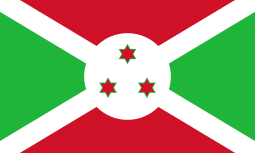 Burundi: 30[21]
Burundi: 30[21] -
 Cameroon: 31; ex-Bosnian Army[21]
Cameroon: 31; ex-Bosnian Army[21] -
 Chad: 85;[21] likely replaced by the Eland[101]
Chad: 85;[21] likely replaced by the Eland[101] -
 Côte d'Ivoire: 20[21]
Côte d'Ivoire: 20[21] -
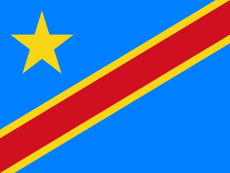 Democratic Republic of the Congo[21]
Democratic Republic of the Congo[21] -
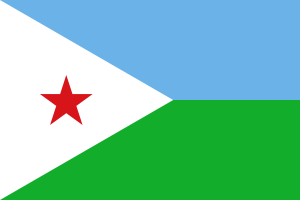 Djibouti: 24;[21] 20 operational.[102]
Djibouti: 24;[21] 20 operational.[102] -
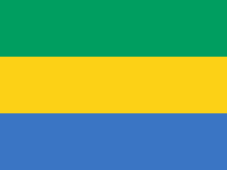 Gabon: 18[21]
Gabon: 18[21] -
 Ecuador: 27[21]
Ecuador: 27[21] -
 Egypt[45][103]
Egypt[45][103] -
 El Salvador: 12 AML-90[21]
El Salvador: 12 AML-90[21] -
 France: Over 300 in reserve[36]
France: Over 300 in reserve[36] -
 Iraq: 170 delivered between 1967 and 1976;[21] 10 operational.[99]
Iraq: 170 delivered between 1967 and 1976;[21] 10 operational.[99] -
 Kenya: 82;[21] refurbished by an Israeli firm in 2007.[104]
Kenya: 82;[21] refurbished by an Israeli firm in 2007.[104] -
 Lebanon: 74;[21] 45 operational.[105]
Lebanon: 74;[21] 45 operational.[105] -
 Lesotho: 6 AML-90;[103] 4 operational.[106]
Lesotho: 6 AML-90;[103] 4 operational.[106] -
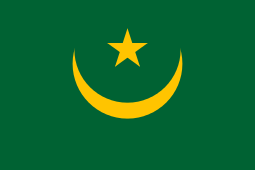 Mauritania: 60, 39 AML-90 and 20 AML-60[21]
Mauritania: 60, 39 AML-90 and 20 AML-60[21] -
 Morocco: 210;[21] 175 operational.[107]
Morocco: 210;[21] 175 operational.[107] -
 Niger: 36[21]
Niger: 36[21] -
 Nigeria: 137[21]
Nigeria: 137[21] -
 Pakistan: AML-60[108]
Pakistan: AML-60[108] -
 Rwanda: 15[21]
Rwanda: 15[21] -
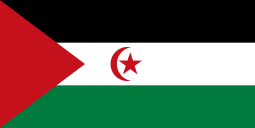 Sahrawi Republic[109]
Sahrawi Republic[109] -
 Saudi Arabia: 300, 190 AML-90 and 110 AML-60;[110] 235 operational.[111]
Saudi Arabia: 300, 190 AML-90 and 110 AML-60;[110] 235 operational.[111] -
 Senegal: 54[21]
Senegal: 54[21] -
 Somalia: 15 AML-90[112]
Somalia: 15 AML-90[112] -
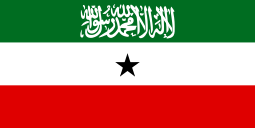 Somaliland[113][114]
Somaliland[113][114] -
 Sudan: 6 AML-90;[115] 5 operational.[116]
Sudan: 6 AML-90;[115] 5 operational.[116] -
 Togo: 10[21]
Togo: 10[21] -
 Tunisia: 18[21]
Tunisia: 18[21] -
 United Arab Emirates: 90 AML-90[21]
United Arab Emirates: 90 AML-90[21] -
 Venezuela: 10[21]
Venezuela: 10[21] -
 Yemen: 185[102]
Yemen: 185[102]
Former Operators
-
 Al-Mourabitoun: Inherited from the Lebanese Armed Forces (LAF).[59]
Al-Mourabitoun: Inherited from the Lebanese Armed Forces (LAF).[59] -
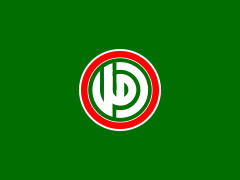 Amal Movement: Inherited from the LAF.[117]
Amal Movement: Inherited from the LAF.[117] -
 Angola: Likely captured from Portugal.[118]
Angola: Likely captured from Portugal.[118] -
 Cambodia: 15 AML-60s in service between 1965 and 1975.[21]
Cambodia: 15 AML-60s in service between 1965 and 1975.[21] -
 FNLA: 1 AML-90;[119] now on display at the Museu das Forças Armadas, Luanda.[120]
FNLA: 1 AML-90;[119] now on display at the Museu das Forças Armadas, Luanda.[120] -
 Ethiopia 56 AML-60[21]
Ethiopia 56 AML-60[21] -
 FNLC: 1 AML-60, some AML-90s[121]
FNLC: 1 AML-60, some AML-90s[121] -
 Ireland: 18 AML-20, 15 AML-90[122]
Ireland: 18 AML-20, 15 AML-90[122] -
 Israel: 29 AML-90[21][40]
Israel: 29 AML-90[21][40] -
 Lebanese Forces: 12 AML-90 inherited from the LAF.[123]
Lebanese Forces: 12 AML-90 inherited from the LAF.[123] -
.svg.png) Libya: 20 AML-90[21]
Libya: 20 AML-90[21] -
 Malaysia: 140 AML-60 and AML-90s[21]
Malaysia: 140 AML-60 and AML-90s[21] -
 Portugal: 56 AML-60, some AML-90s[21]
Portugal: 56 AML-60, some AML-90s[21] -
 Progressive Socialist Party: Inherited from the LAF.[59]
Progressive Socialist Party: Inherited from the LAF.[59] -
.svg.png) South Africa: 100 AMLs procured in 1962, swiftly replaced by Eland Mk2.[20][21]
South Africa: 100 AMLs procured in 1962, swiftly replaced by Eland Mk2.[20][21] -
 Spain: 140 AML-60 and AML-90s[21]
Spain: 140 AML-60 and AML-90s[21] -
 UNITA: 4[20]:35 AMLs acquired clandestinely through Zaire; saw service during the Angolan Civil War.[124][125]
UNITA: 4[20]:35 AMLs acquired clandestinely through Zaire; saw service during the Angolan Civil War.[124][125] -
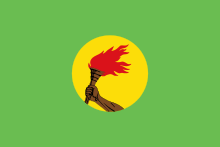 Zaire: 155, 95 AML-60 and 60 AML-90[126]
Zaire: 155, 95 AML-60 and 60 AML-90[126]
In popular culture
The Panhard AML has made some major film appearances, most notably in The Living Daylights, when two Moroccan army AML-90s were mocked up as Soviet reconnaissance vehicles pursuing Afghan Mujahadeen. These examples included mounted RPK machine guns and communications not dissimilar to those in the BRDM-2.
AMLs were first portrayed in the 1973 French thriller The Day of the Jackal, and 1974 Italian war film While There's War There's Hope, which featured an AML-90 of the Portuguese Armed Forces during the Guinea-Bissau War of Independence.
Two AML-90s erroneously presented as German scout cars serving with the Afrika Korps appear in the 1984 French war film Les Morfalous.
Gallery
 Recognition plate
Recognition plate


- Frontal glacis
- Rear hull, including the enclosed powerplant
- Driving compartment
- Gunner's fighting position; note manual turret cranks
 Commander's fighting position; note hatch for ejecting spent casings
Commander's fighting position; note hatch for ejecting spent casings Ammunition rack located in rear of AML turret
Ammunition rack located in rear of AML turret
See also
Panhard series
Vehicles of comparable role, performance, and era
Notes and references
Annotations
- ↑ Per Khalid bin Sultan: I recalled we were phasing out of our armed forces over 200 French-built AML-90 Panhard armored fighting vehicles of a type with which the Senegalese were familiar. "How many can you make operational?" I asked. "As many as you want." "Fine. Hold on to them." In due course, we issued these vehicles to the Senegalese, and also to the contingents from Niger and Morocco, and at the end of the war, on Prince Sultan's instructions, we gave the armored cars to them in gratitude for their help.[55]
References
- ↑ Defence Update (International), 1984, Volume 1 Issue 48–58 p. 8.
- ↑ "Mobile firepower for contingency operations: Emerging concepts for US light armour forces" (PDF). Defense Technical Information Center. 1993-01-04. Archived from the original (PDF) on October 22, 2014. Retrieved 2015-08-18.
- ↑ Tony Cullens. The Encyclopedia of World Military Weapons (1988 ed.). Crescent Books. p. 96. ISBN 978-0-517-65341-8.
- 1 2 3 4 5 6 Christopher F. Foss. Jane's Tanks and Combat Vehicles Recognition Guide (2000 ed.). Harper Collins Publishers. p. 252. ISBN 978-0-00-472452-2.
- 1 2 3 4 5 6 7 8 9 10 11 Christopher F. Foss. Jane's World Armoured Fighting Vehicles (1976 ed.). Macdonald and Jane's Publishers Ltd. p. 133. ISBN 0-354-01022-0.
- 1 2 3 4 5 6 7 8 9 10 Ogorkiewicz, R. M. AFV Weapons Profile 039 Panhard Armoured Cars (Windsor, Berks: Profile Publications).
- ↑ David Miller. Conflict Iraq: Weapons and Tactics of the US and Iraqi Forces (2003 ed.). Salamander Books, Ltd. p. 88. ISBN 0-7603-1592-2.
- ↑ Henk, Daniel. South Africa's armaments industry: continuity and change after a decade of majority rule (2006 ed.). University Press America. p. 164. ISBN 978-0-7618-3482-3.
- ↑ Based on adding together all operators in the map and those listed below.
- 1 2 3 David Jordan. The History of the French Foreign Legion: From 1831 to Present Day (2005 ed.). Amber Books Ltd. pp. 181—185. ISBN 1-59228-768-9.
- ↑ Christopher F. Foss. The illustrated encyclopedia of the world's tanks and fighting vehicles: a technical directory of major combat vehicles from World War I to the present day (1977 ed.). Chartwell Books. p. 93. ISBN 978-0-89009-145-6.
- ↑ Tokarev, Andrei; Shubin, Gennady. Bush War: The Road to Cuito Cuanavale : Soviet Soldiers' Accounts of the Angolan War (2011 ed.). Jacana Media (Pty) Ltd. pp. 128–130. ISBN 978-1-4314-0185-7.
- 1 2 Morse, Stan. Modern Light Tanks and Reconnaissance Vehicles. War Machine, 1983, Volume 2 Issue 19 p. 373–374.
- ↑ Ogorkiewicz, R. M. Design and development of fighting vehicles (1968 ed.). Macdonald Publishers. p. 181. ISBN 978-0-356-01461-6.
- 1 2 3 "L'AUTOMITRAILLEUSE LEGERE PANHARD". Retrieved 15 November 2014.
- 1 2 Henry, Michel (July–December 1972). "French Armor in Algeria". Armor magazine. Fort Knox, Kentucky: US Army Armor Center: 12–15.
- 1 2 3 4 5 Defence Update (International). Defence Update G.m.b.H., 1984, 1984–85 Volume Collected Issues 48–58.
- ↑ Linhart, Robert (1981) [1978]. The Assembly Line. Amherest: University of Massachusetts Press. pp. 107–108. ISBN 978-0-87023-322-7.
- 1 2 3 Bruce Quarry & Mike Spick. An Illustrated Guide to Tank Busters (1987 ed.). Prentice Hall Press. pp. 120–125. ISBN 978-0-13-451154-2.
- 1 2 3 4 Steenkamp, Willem (2006) [1985]. Borderstrike! South Africa into Angola. 1975–1980 (3rd ed.). Durban, South Africa: Just Done Productions Publishing (published 1 March 2006). pp. 29–43. ISBN 978-1-920169-00-8. Retrieved 29 September 2014.
- 1 2 3 4 5 6 7 8 9 10 11 12 13 14 15 16 17 18 19 20 21 22 23 24 25 26 27 28 29 30 31 32 33 34 35 36 37 38 39 40 41 42 43 44 45 46 "Trade Registers". Armstrade.sipri.org. Retrieved 2013-06-20.
- 1 2 3 4 5 6 Mannall, David. Battle on the Lomba 1987: The Day a South African Armoured Battalion shattered Angola's Last Mechanized Offensive (2014 ed.). Helion and Company. pp. 48—92. ISBN 978-1-909982-02-4.
- 1 2 3 4 5 6 Automotive Industries. Philadelphia: Chilton Company, 1968, Volume 139 pp. 39—41.
- 1 2 3 "Restoration of the Eland-60". French Army Reenactment Group (FARG). 2012-01-20. Archived from the original on July 21, 2015. Retrieved 2015-07-10.
- 1 2 3 4 5 6 7 8 9 10 11 12 13 14 Cullen, Anthony; Foss, Christopher. Jane's Land Based Air Defence 1992–93 (1992 ed.). Macdonald and Jane's Publishers Ltd. pp. 68–69. ISBN 978-0-7106-0595-5.
- 1 2 3 4 5 6 7 8 9 10 11 12 13 Chant, Christopher (1987). A Compendium of Armaments and Military Hardware. New York: Routledge & Kegan Paul. pp. 158–59. ISBN 0-7102-0720-4. OCLC 14965544.
- 1 2 Ayliffe-Jones, Noel. World tanks and reconnaissance vehicles since 1945 (1984 ed.). Hippocrene Books. pp. 83—85. ISBN 978-0-88254-978-1.
- 1 2 Perret-Gentil, J. (September 1961). "Une nouvelle auto-mitrailleuse Panhard (A.M.L. 245)". Revue Militaire Suisse. Lausanne: Imprimeries Reunies SA: 42–46.
- 1 2 "Panhard armored vehicle". Dammam: Military Industries Corporation (Armoured Vehicles and Heavy Equipment Factory). 2010. Archived from the original on 25 December 2016. Retrieved 20 September 2016.
- 1 2 3 4 5 Marzloff, Jean (July–August 1973). "Light Armored Units: The Quiet Revolution". Armor magazine. Fort Knox, Kentucky: US Army Armor Center: 7–8.
- 1 2 3 4 Tom Cooper & Albert Grandolini. Libyan Air Wars: Part 1: 1973–1985 (2015 ed.). Helion & Co. Ltd. pp. 39—37. ISBN 978-1-909982-39-0.
- 1 2 3 "Répertoire typologique des opérations, Tome 2: Afrique" (PDF). Paris: Centre de Doctrine d'Enseignment du Commandement. 2016. Archived from the original (PDF) on 7 April 2016. Retrieved 20 September 2016.
- 1 2 3 4 5 Davis, Glenn (1990). "Wheels for the Future: Should the U.S. Army Adopt an Armored Wheeled System?" (PDF). Fort Leavenworth, Kansas: United States Army Intelligence Center. Archived from the original (PDF) on 30 September 2016. Retrieved 4 January 2015.
- ↑ "Répertoire typologique des opérations, Tome 1: Europe, Moyen-Orient, Asie, Amerique Centrale, Caraibes" (PDF). Paris: Centre de Doctrine d'Enseignment du Commandement. 2016. Archived from the original (PDF) on 30 September 2016. Retrieved 20 September 2016.
- ↑ Senat Avis: Premiere Session Ordinaire de 1986–1987 (Tome V)
- 1 2 "Quelques Idees, Plus Ou Moins Non-Conformistes, Sur Les Far/FDR". Retrieved 15 November 2014.
- ↑ Scholtz, Leopold (2013). The SADF in the Border War 1966–1989. Cape Town: Tafelberg. ISBN 978-0-624-05410-8.
- ↑ The Israel Digest of Press and Events in Israel and the Middle East. The Israel Digest, 1966, Collected Issues Volumes 9–10.
- ↑ AML 90 (Exhibit), Yad La-Shiryon, Latrun.: Armored Corps (Israel), 2015
- 1 2 Nachum Baruchy: The Hare'l (10th) Armoured Brigade In The Six Day War. Ariel Publishing, Jerusalem. 2010 (In Hebrew). Baruchy States that the 10th Brigade had one company (9 vehicles) of Panhard AML's.
- ↑ Simon Dunstan & Peter Dennis. The Six Day War 1967: Jordan and Syria (2009 ed.). Osprey Publishing. p. 29. ISBN 978-1-84603-364-3.
- 1 2 Hammel, Eric. Six Days in June: How Israel Won the 1967 Arab-Israeli War (1992 ed.). Charles Scribner's Sons. pp. 315—320. ISBN 978-0-935553-54-3.
- 1 2 3 Armed Forces. Contributions by the Royal United Services Institute for Defence Studies. Allan Limited and the Royal United Services Institute for Defence Studies., 1986.
- ↑ Mitchell, Thomas G. (2013). Israel/Palestine and the Politics of a Two-State Solution. Jefferson: McFarland & Company Inc. p. 97. ISBN 978-0-7864-7597-1.
- 1 2 AML-90 Véhicule blindé léger (Egypte)
- 1 2 3 4 5 Records of Saudi Arabia, 1961–1965: 1965. Burdett, Anita (editor). British Foreign Office, 1997, Volume 6 p. 57. ISBN 978-1-85207-770-9.
- ↑ Nadav Safran (1985). Saudi Arabia: The Ceaseless Quest for Security. Cornell University Press. p. 204. ISBN 978-0-8014-9484-0. Retrieved 4 August 2015.
- 1 2 Middle East Economic Digest (1968). Collard, Elizabeth, Volume 12 pp. 131—173.
- 1 2 3 Granato, Leonard (27 February 1968). "Arabs to buy armored cars". Spokane Daily Chronicle. Spokane, Washington. Retrieved 28 June 2015.
- ↑ Middle East Record (1968). Israel Universities Press, 1973, Volume 4 p. 684.
- 1 2 3 Edgar O'Ballance. No victor, no vanquished: The Yom Kippur War (1979 ed.). Barrie & Jenkins Publishing. pp. 28—370. ISBN 978-0-214-20670-2.
- 1 2 Dunstan, Simon (2003). The Yom Kippur War 1973: Golan Heights Pt.1. Oxford, United Kingdom: Osprey Publishing Ltd. pp. 78—79. ISBN 1-84176-220-2.
- ↑ Attar (ed. Tan, Andrew), Riad (2010). The Global Arms Trade: A Handbook. London: Routledge Books. p. 115. ISBN 978-1-85743-497-2.
- 1 2 Africa Analysis. Africa Analysis Collected Edition, 1996, 1995–96 Volume Collected Issues 238–262.
- 1 2 Bin Sultan, Khaled (1995). Desert warrior: a personal view of the Gulf War by the Joint Forces commander. New York City: HarperCollins. p. 257. ISBN 978-0-06-017298-5.
- ↑ Hamizrachi, Beate (1984). The Emergence of South Lebanon Security Belt. New York: Praeger. pp. 55—89. ISBN 978-0-275-92854-4.
- ↑ African Defence Journal: Article "Panhard Armoured Cars and Reconnaissance Vehicles in Africa". The Journal Publishers, 1981 volume, Collected Issues 5–16 p. 58.
- 1 2 Hammel, Eric M. (1985). The Root: The Marines in Beirut, August 1982-February 1984. New York: Harcourt Brace Jovanovich. pp. 162—179. ISBN 0-15-179006-X.
- 1 2 3 4 5 6 7 8 9 10 United States Army Human Engineering Laboratory (June 1979). Military Operations in selected Lebanese built-up areas, 1975–1978 (PDF). Technical Memorandum 11–79 (Report). Archived from the original (PDF) on February 1, 2014.
- ↑ Lebanese army raids Bab al-Tabbaneh in second day of "security plan"
- 1 2 Lebanon army expands operation in restive Tripoli
- 1 2 Badran, Tony (Rubin, Barry ed.) (2010). Lebanon: Liberation, Conflict, and Crisis. London: Palgrave Macmillan. pp. 50–52. ISBN 978-0-230-62306-4.
- ↑ Malmassari, Paul (August 1996). "UN Armored Cars/Reconnaissance Vehicles (since the beginning)". Armored Car: The Wheeled Fighting Vehicle Journal. Salem, Oregon: David Haugh Publisher: 8–9.
- ↑ Lavery, Don (1 May 2013). "Veteran armoured car fleet retired". The Irish Independent. Dublin. Archived from the original on September 17, 2016. Retrieved 4 September 2016.
- ↑ Ishizuka, Katsumi (2004). Ireland and International Peacekeeping Operations 1960–2000: A Study of Irish Motivation. Philadelphia: Routledge Books. pp. 81–82. ISBN 978-0-7146-8440-6.
- 1 2 3 Adrian English. Irish Army Orders of Battle 1923–2004 (2005 ed.). Tiger Lily Books. pp. 56–78. ISBN 978-0-9720296-7-4.
- 1 2 3 4 O'Clery, Conor (2008). May You Live in Interesting Times. Dublin: Poolberg Press Ltd. pp. 24–362. ISBN 978-1-84223-325-2.
- 1 2 3 4 5 Harvey, Dan (2014). Attack on At Tiri: Force Met With Force. Dunboyne: Maverick House. pp. 12–136. ISBN 978-1-908518-18-7.
- ↑ Elliot (June 2013). "Out with a bang" (PDF). Combat Camera: 14.
- ↑ Otto Lehrack. America's Battalion: Marines in the first Gulf War (2005 ed.). The University of Alabama Press. pp. 188–89. LCCN 2004016593.
- ↑ Van der Bijl, Nicholas (2005) [1992], Argentine Forces in the Falklands, Osprey Publishing, p. 23, ISBN 1-85532-227-7
- ↑ John Guzman. Reflections behind the Retina (2011 ed.). Xlibris Corporation. pp. 1–612. ISBN 978-1-4653-0943-3.
- 1 2 Revista Cavalaria
- ↑ Peter Abbot. Modern African Wars (2): Angola and Mozambique 1961–74 (1988 ed.). Osprey Publishing. ISBN 978-0-85045-843-5.
- ↑ Mario J. Azevedo. The Roots of Violence: A History of War in Chad (1998 ed.). Gordon and Breach Publishers. p. 90. ISBN 90-5699-583-9.
- ↑ 2 suspected jihadis killed, 16 arrested near Tunis
- ↑ http://www.icc-cpi.int/iccdocs/doc/doc1097345.pdf
- ↑ Alain Rouvez (1 January 1994). Disconsolate Empires: French, British and Belgian Military Involvement in Post-Colonial Sub-Saharan Africa. University Press of America. pp. 172–174. ISBN 978-0-8191-9643-9. Retrieved 25 July 2013.
- 1 2 3 4 5 6 7 8 9 10 11 12 13 14 15 16 17 18 19 20 21 22 23 24 25 26 27 28 29 30 Pretty, Ronald. Jane's Weapon Systems, 1979–80 (1979 ed.). Macdonald and Jane's Publishers Ltd. pp. 312–731. ISBN 978-0-531-03299-2.
- 1 2 3 4 Christopher F. Foss. Jane's Armour and Artillery (1984 ed.). Macdonald and Jane's Publishers Ltd. pp. 768–770. ISBN 0-354-01022-0.
- 1 2 3 4 Pretty, Ronald. Jane's Weapon Systems, 1983–84 (1983 ed.). Macdonald and Jane's Publishers Ltd. pp. 269–713. ISBN 978-0-7106-0776-8.
- ↑ Glantz, David (1984). "The Soviet Airborne Experience" (PDF). Fort Leavenworth, Kansas: Combat Studies Institute. Retrieved 28 September 2016.
- 1 2 3 4 5 Ogorkiewicz, Richard. Technology of tanks, Volume 1 (1991 ed.). Macdonald and Jane's Publishers Ltd. pp. 70–71. ISBN 978-0-7106-0595-5.
- 1 2 "Ratel teen tenk en". Port Elizabeth: International Veterans' Association/South African Forces Club. 2011. Archived from the original on 25 April 2011. Retrieved 20 September 2016.
- ↑ Margolis, Jonathan. The secret life of Uri Geller (2013 ed.). Watkins Publishing Ltd. pp. 147–148. ISBN 978-1-78028-761-4.
- ↑ South African Journal for Contemporary History, Volume 31. Sun Media (Bloemfontein), 2006. pp. 361–362.
- 1 2 3 Heitman, Helmoed-Römer. South African Arms and Armour - A concise guide to armaments of the South African Army, Navy, and Air Force. Struik Publishers 1988. ISBN 0-86977-637-1 p 44–45.
- ↑ Hesom, Ross. From Boys to Men: A Victim of Conscription (2009 ed.). Brelan Books. pp. 147–148. ISBN 978-0-9812079-0-2.
- 1 2 African Defence Journal, Issues 113–124. The Journal, 1990, Collected Issues 113–124. pp. 112–113.
- 1 2 3 4 African Defence Journal, Issues 5–16. The Journal, 1981, Collected Issues 5–16. pp. 54–59.
- ↑ African Defence Journal, Issues 78–88. The Journal, 1987, Collected Issues 78–88. pp. 203–204.
- ↑ "Guinée: la tentative de putsch souligne les divisions de l'armée". Ladepeche. Toulouse. 23 December 2008. Retrieved 28 September 2016.
- ↑ How war boosts Kenya's regional, global clout
- 1 2 3 4 "LCT-20mm - LIW Compact Turret" (PDF). Centurion: Denel Land Systems. 2004. Archived from the original (PDF) on 9 April 2005. Retrieved 20 September 2016.
- 1 2 Brown, Peter (August 1994). "Wheeled armor in Ireland". Armored Car: The Wheeled Fighting Vehicle Journal. Salem, Oregon: David Haugh Publisher: 7–8.
- ↑ "Toyota Motor Corp" (PDF). Ottawa: Coalition To Oppose The Arms Trade (Canadian). 2012. Archived from the original (PDF) on 5 August 2016. Retrieved 20 September 2016.
- ↑ "Eurosatory 2016 - Regional Focus: Middle East and Africa [ES2016D1]". London: Jane's Information Group. 13 June 2016. Archived from the original on 14 June 2016. Retrieved 29 September 2016.
- ↑ "Bahrain" (PDF). Institute for National Security Studies. Retrieved 28 July 2016.
- 1 2 Wheeled Armored Fighting Vehicles
- ↑ "Sơ lược về lực lượng thiết giáp của Lục quân Myanmar". Song Lo. 2009-01-31. Archived from the original on September 22, 2015. Retrieved 2015-09-18.
- ↑ Double Misfortune - Deepening Human Rights Crisis in Chad
- 1 2 "The Military Balance and Arms Sales in Yemen and the Red Sea States: 1986–1992" (PDF). Center for Strategic and International Studies. Archived from the original (PDF) on March 10, 2010. Retrieved 28 June 2014.
- 1 2 "Panhard AML 60/90 Light Scout Car". militaryfactory.com. Retrieved 2013-05-02.
- ↑ Israeli arms transfers to sub-Saharan Africa
- ↑ "Lebanon" (PDF). Institute for National Security Studies. Retrieved 28 July 2016.
- ↑ Guy Martin. "Lesotho defence force gets new chief". Retrieved 15 November 2014.
- ↑ "Morocco" (PDF). Institute for National Security Studies. Retrieved 28 July 2016.
- ↑ "Pakistan: Military takes security of Airports, Prisons and Defence Installations". Retrieved 15 November 2014.
- ↑ "Panhard AML 60/90 Light Armored Scout Car (1960)". Retrieved 15 November 2014.
- ↑ Cordesman, Anthony H. (2009). Saudi Arabia: National Security in a Troubled Region. Santa Barbara, California: ABC-CLIO. pp. 159—164. ISBN 978-0-313-38089-1.
- ↑ Cordesman, Anthony H. (2003). Saudi Arabia Enters the Twenty-first Century: The military and international security dimensions. 1. Westport, Connecticut: Praeger Publishers. p. 144. ISBN 978-0-275-98091-7.
- ↑ IISS Military Balance 1989–90, Brassey's for the IISS, 1989, 113.
- ↑ "Panhard AFV Family". Jason W. Henson. Retrieved 2013-06-20.
- ↑ Somaliland's Resurgence a Key to CT War. Defense & Foreign Affairs Strategic Policy journal. Alexandria: Oct 2003. Vol.31, Iss. 10; pg. 9
- ↑ Richard Lobban, Jr. Global Security Watch: Sudan (2010 ed.). Greenwood Publishing Group. p. 182. ISBN 978-0-313-35332-1.
- ↑ INSS: Sudan
- ↑ Micheletti, Bataille d'artillerie, RAIDS magazine (1989), p. 34.
- ↑ Collelo, Thomas. Angola: A Country Study. pp. 237–317.
- ↑ Culture Clash: The Influence of Behavioural Norms on Military Performance in Asymmetric Conflicts
- ↑ Selected Short Stories from Billy
- ↑ Gilbert, Adrian. Voices of the Foreign Legion: The History of the World's Most Famous Fighting Corps. Skyhorse Publishing 2010. ISBN 978-1-61608-032-7
- ↑ United Nations Register of Conventional Arms
- ↑ Military Operations in Selected Lebanese Built-Up Areas, 1975–1978
- ↑ Stephen Zaloga. T-34-85 Medium Tank 1944–94 (2011 ed.). Osprey Publishing. p. 40. ISBN 1-85532-535-7.
- ↑ Nortje, Piet (2003). 32 Battalion. Zebra Press. p. 97. ISBN 978-1-86872-914-2.
- ↑ Cooper, Tom (2013). Great Lakes Holocaust: First Congo War, 1996–1997. Solihull: Helion & Company. pp. 14–16. ISBN 978-1-909384-65-1.
Further reading
- Christopher F. Foss, Jane's Tank and Combat Vehicle Recognition Guide, HarperCollins Publishers, London 2002. ISBN 0-00-712759-6
- Peter Gerard Locke & Peter David Farquharson Cooke, Fighting Vehicles and Weapons of Rhodesia 1965–80, P&P Publishing, Wellington 1995 ISBN 0-473-02413-6
- Steven J. Zaloga, Tank battles of the Mid-East Wars (2): The wars of 1973 to the present, Concord Publications, Hong Kong 2003. ISBN 962-361-613-9
External links
| Wikimedia Commons has media related to Panhard AML. |


